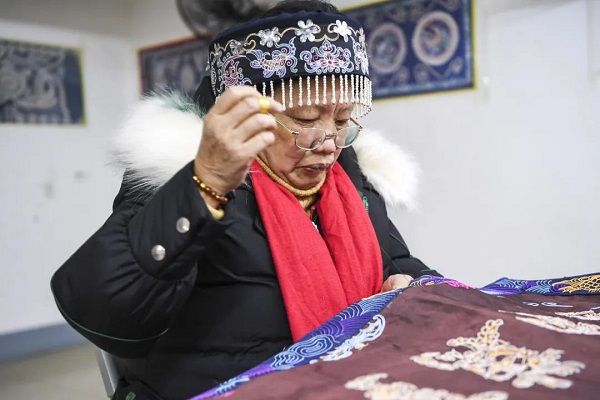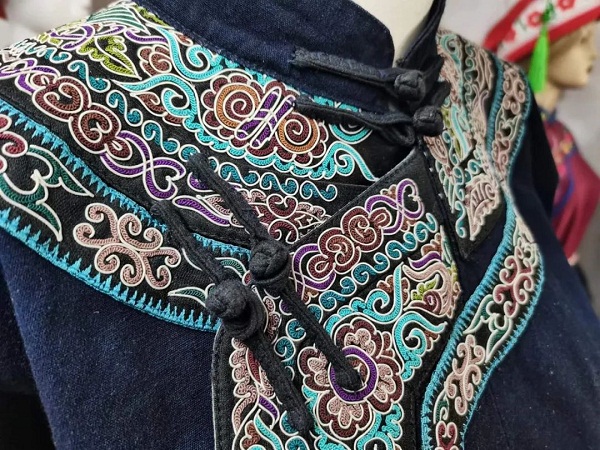Mulam woman inherits ICH embroidery skill
When participating in traditional festival celebrations, people from the Mulam ethnic group like to wear their traditional costumes. Many exquisite embroideries of traditional Mulam costumes are made by Xie Xiurong, who is a representative inheritor of Mulam embroidery, an autonomous-regional-level intangible cultural heritage (ICH) item.
Xie was born in Shuangzhai village, Siba town, Luocheng Mulam autonomous county, Hechi, a famous embroidery village. There are more than 80 embroidery women in the village, and embroidery techniques have now been passed down to Xie, the fifth-generation representative.
Embroidery, a traditional culture of the Mulam nationality, is divided into three types: flat embroidery, paper-cut embroidery and horsetail embroidery. Mulam embroidery is mainly used in handicrafts such as braces, clothing and aprons.
The production process of horsetail embroidery is complicated. It takes several months or even a year to complete. The finished product is antique, vivid, exquisite, and durable.
In 2010, Mulam embroidery was included in the ICH list of Guangxi, and Xie became its representative inheritor. In 2012, the first ICH training base in Luocheng was built in Zhongzhai village, Siba town. Xie took this opportunity to hold a class to teach embroidery skills.
Over the past few years, she has trained more than 3,000 people, among them 54 apprentices have won awards in various competitions.
With the support of the local government, Xie's embroidery studio has introduced modern machines for mass production. The studio improves the popularity and economic value of Mulam embroidery, helps relocated people master embroidery technology, and increases home-based employment.
"We will continue to inherit the embroidery skill and spread Mulam culture," Xie said.

Xie is busy with embroidering. [Photo/Hechi Daily]

Artwork by Xie. [Photo/Hechi Daily]
Copyright © Hechi Municipal Government. All rights reserved.
Presented by China Daily.
京ICP备13028878号-6






